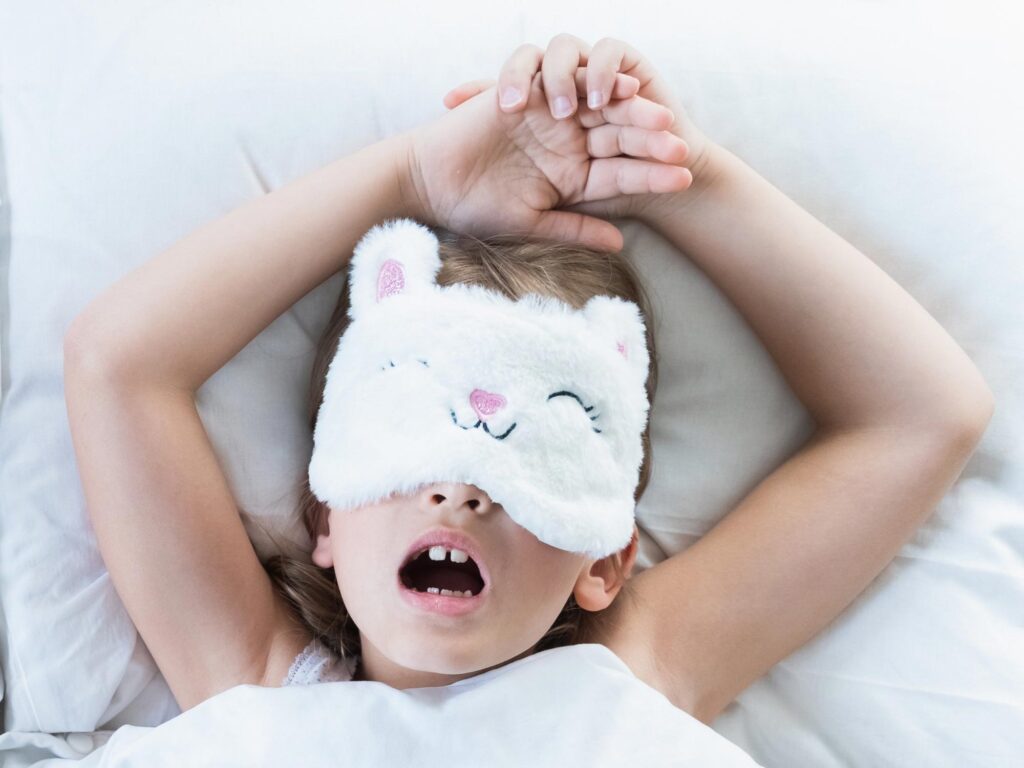Pediatric Airway
Sleep
A good night’s sleep is critical for everyone, especially growing children. Many children experience breathing problems during sleep (Sleep-disordered breathing) without their parents even realizing it. Getting enough air through a clear airway during sleeping and waking hours is essential for developing good health for a lifetime!
– Jennifer Chiang, DDS
The amount and quality of sleep that your child gets is critical. Sleep restores and replenishes the energy needed to fuel physical and mental development in children. Insufficient sleep quantity and quality can have negative consequences such as behavioural issues, poor brain development, and high blood pressure.
Signs of Pediatric Airway Problems
The most obvious sign to look for is mouth breathing. Breathing should be through the nose and silent. If there are any breathing sounds such as snoring or resistance in the airway, it’s recommended that patients film it to review with the dentist and pediatrician (Ehsan 2016). If you note any of the following signs while your child is sleeping or napping, please reach out for an airway consultation:
- snoring
- mouth breathing
- teeth grinding
- bed-wetting
- sweating
- frequent waking
- unususal sleep positions
It can also be helpful to note behavioural signs while the child is awake as many children who are diagnosed with attention deficit hyperactivity disorder (ADHD) may be suffering from poor sleep as the behavioural signs are similar (Wu 2017):
- daytime drowsiness
- trouble concentrating
- irritablity or moodiness
- fidgeting and hyperactivity

Healthy Breathing
Breathing should be through the nose and silent. Nasal breathing should be encouraged over mouth breathing, especially while asleep. For both childen and adults, nasal breathing allows the lungs to get mroe oxygen via nitric oxide release (Lundberg 1996, Crespo 2009).
Mouth breathing allows unfiltered, cold, dry air into the lungs. An open mouth can lead to dysfunctional jaw positioning and facial development of the upper and lower jaws, crowded teeth, and poor swallowing habits. Mouth breathing often leads to dry mouth which increases the risk of gum disease and tooth decay.
Parents are encouraged to note their child’s breathing habits during the day to remind them to use their noses. I joke with kids that just as it’s better to breathe through your nose and eat with your mouth even though you can accomplish the tasks in reverse. Lips together and teeth apart is an easy way to remind you and your kids of the importance of nasal breathing. If they can’t keep their lips together, then we’d like to evaluate as it’s possible that there may be anatomical constrictions such as enlarged tonsils and adenoids.
Dental Examination of Pediatric Airway
Functional Dentistry practices early intervention in pediatric patients because it recognized thethe importance of craniofacial complex and its contribution to overall health. The proper the development of pediatric airway is foundational to oral health as an adult. During our comprehensive exam, we will identify common signs of disordered breathing such as tongue posture, tonsils, mouth breathing, arch shape, and facial symmetry.
Early detection of poor breathing habits, jaw, and air development means treatments can be started before any health problems arise. If we suspect that your child may have sleep-disordered breathing, we can discuss the options directed and the source of the problems. These might be poor habits, allergies, sleep hygiene issues, or other concerns of that may require referral to an orthodontist, pediatrician, allergist or myofunctional therapists can address.
Treatment for Pediatric Airway Disorders
There are many treatment options for improving your child’s breathing during sleep, like a myofunctional trainer, allergy testing, or habit-correcting exercises to encourage nasal breathing. The treatment depends on an accurate diagnosis of the root cause. An airway assessment will allow us to evaluate if there are poor habits, allergies, sleep hygiene issues, or other concerns. We work with a team and will refer to an orthodontist, pediatrician, allergist or myofunctional therapist as needed. If you would like a consultation for your child please schedule with us online or give us a call.
Additional resources:
Ask the Dentist- “What You Need to Know If Your Child Snores, Grinds or Is a Mouth Breather”
Americal Academy of Pediatrics- “Smart Solutions for Safe and Sound Sleep”

